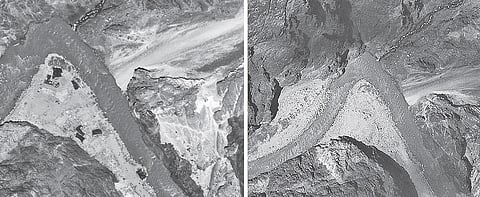

NEW DELHI: India and China will jointly confirm the compliance of disengagement along the Line of Actual Control (LAC) in Ladakh, which began on Monday, after the first phase is complete.
The militaries of India and China began thinning their troops and moving their vehicles back from some points in eastern Ladakh after Special Representatives of both sides - National Security Advisor Ajit Doval and Chinese Foreign Minister Wang Yi - talked to each other on Sunday.
“Joint verification of re-located camps will be done to see that the land form is restored,” an Army officer said.
It means that the two sides will be physically present to confirm compliance as per the agreements so as to build trust, the officer added.
Disengagement with the People’s Liberation Army (PLA) in China started on Monday with rearward movement of PLA vehicles seen in the general area of Galwan (Patrolling Point-14 and 15) and Gogra Post (Patrolling Point 17A) Hot Springs.
“PLA was seen removing tents and structures at Patrolling Point-14,” but there was no clear word on the depth of the pullback.
However, stand-off continues at points like Finger-4 and Depsang.
Meanwhile, Defence Minister Rajnath Singh reviewed the status of border infrastructure with DG Border Roads Lt Gen Harpal Singh. Forward connectivity to border areas was reviewed, the defence ministry said in a press release.
With the situation in ferment, the US did some muscle flexing by deploying two aircraft carriers in the disputed South China Sea in response to recent Chinese aggression on multiple fronts, including India and Bhutan.
White House Chief of Staff Mark Meadows said: “The message is clear. We are not going to stand by and let China or anyone else take the reins in terms of being the most powerful, dominant force, whether it is in that region or over here. Our military might stands strong and will continue to stand strong, whether it is in relationship to a conflict between India and China or anywhere else.”
Looking at banning China apps: Pompeo
Secretary of State Mike Pompeo said the US is ‘certainly looking’ at banning Chinese social media apps like TikTok.
“I do not want to get out in front of the President Trump, but it is something we are looking at,” he said